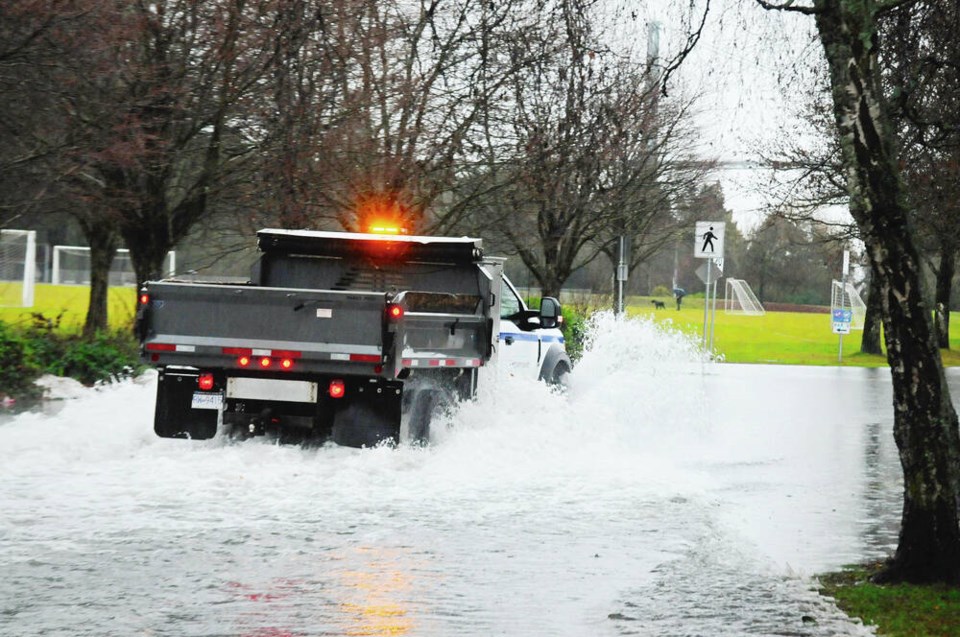Last week, Time Colonist reporter Louise Dickson reported on B.C.’s River Forecast Centre for many regions throughout the province as rivers rise to their peak levels already — in January.
Remember when the spring thaw actually occurred in the spring?
Being trapped by a flood is obviously one of the biggest real life dangers a driver can encounter. Today, though, I’m focusing on the aftermath, the damage done to vehicles that have “survived” a flood and the implications for driver safety.
Every day there’s a flood story in the news. So it’s hardly surprising that hundreds of thousands of vehicles are written off each year in North America as a result.
According to the Insurance Bureau of Canada, “any vehicle that has been subjected to flooding to the level of the bottom of the dash must be branded as non-repairable and can no longer be operated on any Canadian road.”
We saw lots of vehicles in that category in the devastation around Chilliwack, Abbotsford and Merritt last year.
The first problem is the assumption that the term “written off” means a vehicle is permanently removed from the resale market. Not so.
The U.S. vehicle sales and history tracking firm CARFAX estimated that 378,000 flooded vehicles were put back on the street in 2021.
Some restored vehicles were most likely not flooded out to the dashboard level and properly repaired. Others, though completely flooded, might have been properly repaired, inspected and legally re-sold.
A vehicle in that latter category should have been designated as salvage if all of the regulations were followed.
Still, that’s a lot of restored cars and you can’t believe everyone is following the rules.
In the climate-change era, vigilance is the key for buyers. Flood damaged cars are often transported well away from their point of origin to areas that see very little flooding, if any, during the year.
The second problem is that a flooded vehicle presents an astronomical number of potential repair problems.
Vehicles have complex electronic systems and the components that run them are extremely vulnerable to water damage. Water also damages vital lubricants for mechanical parts.
One of the worst aspects in assessing water damage is that it can seep into any section of a vehicle. Seepage can be a slow process, meaning that everything might look great upon first inspection, but the damage can manifest itself months or even years down the line.
So what should we be looking for?
First up, ask the seller directly if the vehicle has had water damage or has been repaired for that issue. The answer is never a guarantee but it’s tough to overcome an outright lie down the road in court, if things get that far.
The most obvious sign of flooding is, of course, a mould or mildew smell. That should lead you to a close inspection under seats and carpets for signs of water and mud.
However, excessive use of sprays and air fresheners could also be a clue that the seller is trying to hide something.
How about an older model vehicle that has had its seats and carpeting replaced? Do they match the rest of the car’s interior? Without a good explanation, it’s not really logical that someone would spruce up an older car this way.
Check crevices and other areas deep inside the vehicle, like door speaker housings and spare tire wells in the trunk, for moisture and rusting.
Pull seatbelts all the way out of their retractors and inspect the entire length of the belt.
Run the vehicle’s identification number through the VIN checker at . The Insurance Bureau records vehicles in the flood, fire, irreparable and salvaged categories.
For $46.95 you can also run the VIN through which gives you a vehicle’s accident and repair history.
Use a trusted mechanic to go through the vehicle. It’s money well spent in comparison to a lifetime of flood repairs.
Finally, use the: “It’s too good to be true” test. Walking away costs nothing.
Glove Box: Andy wrote recently to correct me about snow tires. A tire bearing the M+S symbol is known as a three- season tire. They are good for most of the winter conditions we run into along our coastal areas and are considered legal for snow use in B.C., according to the Ministry of Transportation website, but they are not full-on winter tires in the purest sense. Winter tires also bear a snowflake and three peaked mountains on them. The latter are made from softer rubber and grip better in ice and snow, especially when it gets below -7 C. Andy correctly notes that in the severest conditions this province may offer in winter, full fledged snow tires (with mountain and snowflake) are the safest way to go.



